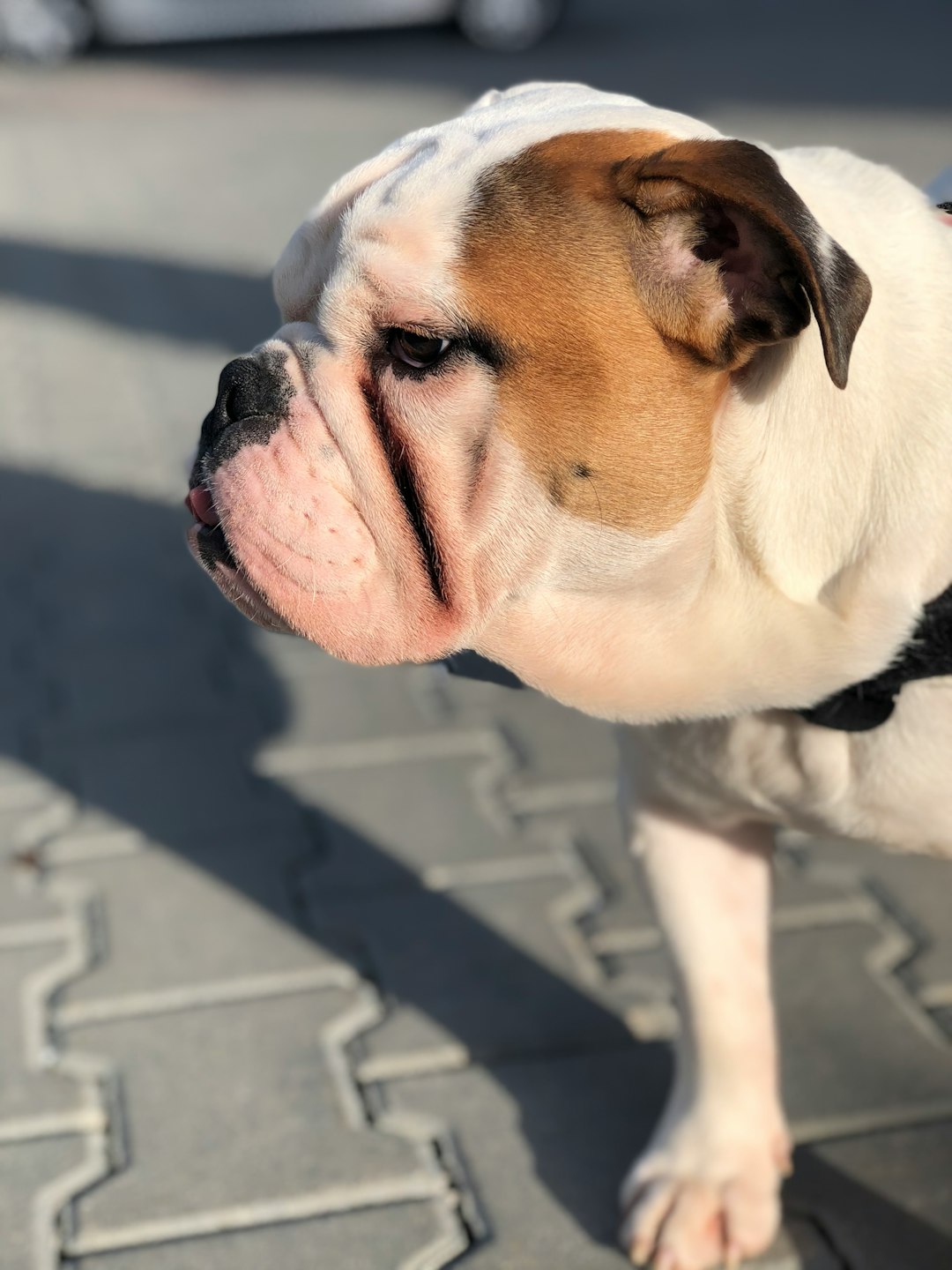If you ever find yourself in the unfortunate situation of a Dog Stung by Bee, don’t panic just yet! Recognizing the signs of a bee sting in your furry friend can be a real game changer. From sudden yelps to excessive licking at the paw, your pup will give you plenty of hints. Luckily, with quick action and a sprinkle of knowledge, you can transform a bee fiasco into a mere footnote of your dog’s adventure. So, let’s dive into what you need to know to keep your canine companion buzzing happily along!
Recognizing the Signs of a Bee Sting in Dogs

So, your beloved pup might have become a reluctant bee’s new best friend. But how can you tell if your dog stung by a bee? Here are the telltale signs to watch for:
- Localized Swelling: Look for a bumpy surprise where the sting occurred, often near the mouth, paws, or face.
- Excessive Licking or Chewing: If your dog won’t stop focusing on the sting site, it’s their way of saying “ow!”
- Whining or Whimpering: Dogs are vocal creatures. If they’re singing the sad song of an annoyed pet, a sting might be the culprit.
- Behavior Changes: Is your pup suddenly less playful? They may be acting like they got stuck in a sticky situation—because they did!
- Anaphylactic Shock: In rare cases, look out for severe symptoms like difficulty breathing, swelling around the face, or rapid pulse. It’s a serious situation that demands attention!
Recognizing these signs early is crucial for responding swiftly if your dog stung by a bee. Your furry friend’s comfort is just a keen observation away!
Immediate First Aid Steps

When your beloved pup experiences a dog stung by bee moment, swift action is crucial! Here’s a handy guide to help you spring into action like a superhero:
- Stay Calm: Your dog can pick up on your mood. A calm presence helps reduce their anxiety.
- Remove the Stinger: If you see a stinger, carefully remove it with a flat object (like a credit card) to avoid injecting more venom.
- Clean the Area: Rinse the sting site with mild soap and water. This helps to minimize infection risks.
- Apply a Cold Compress: Use a cloth with cold water or ice wrapped in a towel for 10-15 minutes. This reduces swelling and soothes the discomfort.
- Monitor Symptoms: Keep an eye on your furry friend for any signs of distress or an allergic reaction.
Remember, if your dog begins acting unusual or if their face swells, their dog stung by bee situation may require immediate veterinary attention! It’s better to be safe than sorry! 🐶💛
Monitoring Your Dog’s Symptoms

So, your beloved pup gets dog-stung by a bee—now what? After you take those first aid steps, it’s crucial to keep a close eye on your furry friend. Why? Because some symptoms can escalate quickly, and you want to be the best pet parent possible!
Watch for These Symptoms:
- Swelling: Check the sting site for any unusual puffiness. A little swelling is normal, but excessive means it’s time to worry.
- Lethargy: If your pup seems more couch potato than playful puppy, it’s worth noting.
- Vomiting or Diarrhea: Digestive distress could indicate a reaction. Monitor those bathroom breaks!
- Difficulty Breathing: The scary symptom! If your dog struggles to breathe, act fast.
Quick Reference Table:
| Symptom | Action Required |
|---|---|
| Mild Swelling | Apply a cold compress |
| Increased Lethargy | Rest and hydrate |
| Vomiting/Diarrhea | Contact your vet |
| Breathing Difficulties | Emergency vet visit |
In conclusion, if you notice any signs that raise alarm bells, don’t hesitate to contact your veterinarian. Being vigilant about your dog’s symptoms after a dog stung by a bee can make all the difference in their recovery!
When to Contact Your Veterinarian
So, your beloved pooch is a Dog Stung by Bee victim. It’s essential to know when to call in the professionals. Here’s a quick checklist to help you decide:
- Excessive Swelling: If the swelling around the sting site balloons faster than a party balloon, it’s time for a vet visit.
- Difficulty Breathing: Wheezing, coughing, or panting? Don’t brush it off; this could signal trouble.
- Persistent Vomiting: One or two upchucks might be nothing, but ongoing vomiting is a red flag.
- Unusual Behavior: Is your pup more lethargic than usual or showing signs of distress? This signals something may be amiss.
Quick Comparison
| Symptoms | Vet Needed? |
|---|---|
| Slight Swelling | No |
| Major Swelling | Yes |
| Normal Breathing | No |
| Struggling to Breathe | Yes |
| Occasional Vomiting | No |
| Frequent Vomiting | Yes |
| Playful & Alert | No |
| Lethargic or Distressed | Yes |
Remember, swift action can make all the difference! If your dog exhibits any concerning signs post-bee sting, don’t hesitate to reach out to your veterinarian. Better safe than sorry!
Potential Allergic Reactions
A dog stung by a bee can experience a range of reactions, and some pups may surprise you with their sensitivities! Allergic reactions can go from minor irritation to life-threatening emergencies in the blink of an eye. Here’s what to watch for:
- Mild Reactions:
- Swelling at the sting site
- Itching or licking the area
- Low-grade fever
- Moderate Reactions:
- Hives (raised bumps) around the body
- Excessive drooling or vomiting
- Diarrhea
- Severe Reactions (Anaphylaxis):
- Swelling of the face, lips, or throat
- Difficulty breathing or wheezing
- Collapse or loss of consciousness
If your dog stung by a bee displays any severe reaction, it’s time to sprint—or swiftly drive—to the vet. Remember, not all furry friends react the same way; some might be perfectly fine while others may face a sudden and drastic response. Stay vigilant, and you’ll help your pup dodge a bee-related catastrophe! 🐶
Home Remedies for Bee Stings
So, your beloved pooch got a bit too curious and ended up getting a Dog Stung by Bee. Fear not! Before you rush off to the vet, you can try some simple home remedies to ease their discomfort. Here’s your magic toolkit:
- Cold Compress: Apply a cold pack wrapped in a cloth to the affected area for about 10-15 minutes. This helps reduce swelling and numbs the pain.
- Baking Soda Paste: Mix baking soda and water to create a paste. Apply it to the sting site; it can help neutralize the venom and soothe irritation.
- Apple Cider Vinegar: A dab of apple cider vinegar can do wonders. Its acidic nature counteracts the bee venom and may relieve pain.
- Honey: This isn’t just for your tea! Applying a small amount over the sting can help reduce inflammation thanks to its antibacterial properties.
- Oatmeal Bath: If your dog begins to scratch, an oatmeal bath can calm their skin. Just remember, it’s messy – but hey, a happy pup is worth it!
Keep an eye on your furry friend after these remedies. A quick, caring response can turn a woeful Dog Stung by Bee experience into a mere anecdote from the dog park.
Understanding Bee Behaviors and Their Risks to Pets
Understanding the sneaky lives of bees can help you protect your furball from bee stings. So, let’s dive into some bee behaviors and the potential risks they pose to your beloved companion!
- Bee-Friendly Zones: Dogs often explore flower gardens, parks, or meadows where bees like to hang out. Avoid these hotspots during peak bee activity, especially in spring and summer.
- Curiosity Kills the Calm: Dogs, being the curious creatures they are, may provoke bees by sniffing or pawing at them. Remember, a dog stung by a bee is often a dog that got too close to the buzz!
- Buzzing Risks: Not all bees are created equal! Honeybees are usually less aggressive than wasps, but they still sting when threatened.
| Bee Type | Aggressiveness Level | Common Locations |
|---|---|---|
| Honeybees | Low | Gardens, beehives |
| Wasps | High | Trash cans, picnics |
| Yellowjackets | Moderate | Near food and drinks |
Keeping your dog away from clumps of flowers or buzzing groups can reduce the likelihood of your pooch becoming yet another dog stung by bee tale. Always maintain vigilance during outdoor adventures!
Understanding Bee Behaviors and Their Risks to Pets
When it comes to your furry friends, knowing the buzz about bees is vital! Understanding bee behaviors can help you prevent your beloved dog stung by bee drama. Let’s break it down:
Bee Behavior Insights:
- Foraging: Bees are on the hunt for nectar and pollen, often in gardens and parks. If your dog enjoys sniffing flowers, be wary!
- Defensive: Bees protect their hives. If your pup unintentionally gets too close, it could translate to a dog stung by bee situation.
- Seasonally Active: Spring and summer bring more bees out. Keep an eye on your pooch during these warmer months!
Risky Zones:
- Gardens and Flower Beds: Avoid letting your dog dig or sniff too deeply here.
- Picnics: Food attracts bees like honey. Keep an eye on your pup!
Tips for a Buzz-free Experience:
- Leash Your Dog: Control their curiosity in areas known for bee activity.
- Educate Yourself: Know the signs of bee stings so you’re prepared if your dog stung by bee becomes a reality.
Stay informed, stay safe, and let those paws roam without fear!
Frequently Asked Questions
What should I do if my dog gets stung by a bee?
First, don’t panic! Begin by examining the area where your dog has been stung – you might find the bee’s stinger still embedded in their skin. If so, carefully remove it using tweezers but avoid pinching the venom sac. This prevents more venom from being released! After that, clean the area gently with soap and water to ward off infections and apply a cool compress to soothe the swelling. If your dog appears to be in distress or has trouble breathing, it’s a race against the clock to your vet!
How can I tell if my dog is having an allergic reaction to a bee sting?
A doggie drama queen might act out in distress upon receiving a bee sting, but if they start showing signs like excessive swelling, hives, difficulty breathing, or vomiting – well, it’s a serious ‘call the vet’ moment. Specifically, noticeable swelling around their face, especially near the eyes and mouth, is a big red flag! Every jalapeño hot dog reacts differently, so don’t hesitate – contact your vet immediately to see if an allergic reaction is taking place!
Can I give my dog medication for a bee sting?
While you’re not trying to turn your dog into a mini-pharmacist, if there’s swelling you might consider giving some over-the-counter antihistamines, like Benadryl, but make sure to consult the vet first! Dosages vary based on the dog’s size, and what’s good for one pooch could be a no-no for another. If you’re ever in doubt, let the vet take the lead rather than making a furry experiment out of it!
When should I seek veterinary help for my dog after a bee sting?
If your dog is acting like they just came out of a horror film – excessive swelling, panting excessively, or worse, if they turn into a wheezing caricature of their former self with difficulty breathing – it’s time to hit the panic button for the vet. A quick veterinary examination can ensure that their reaction isn’t heading into critical territory. Always err on the side of caution, because when it comes to health, it pays to be a worrywart!



